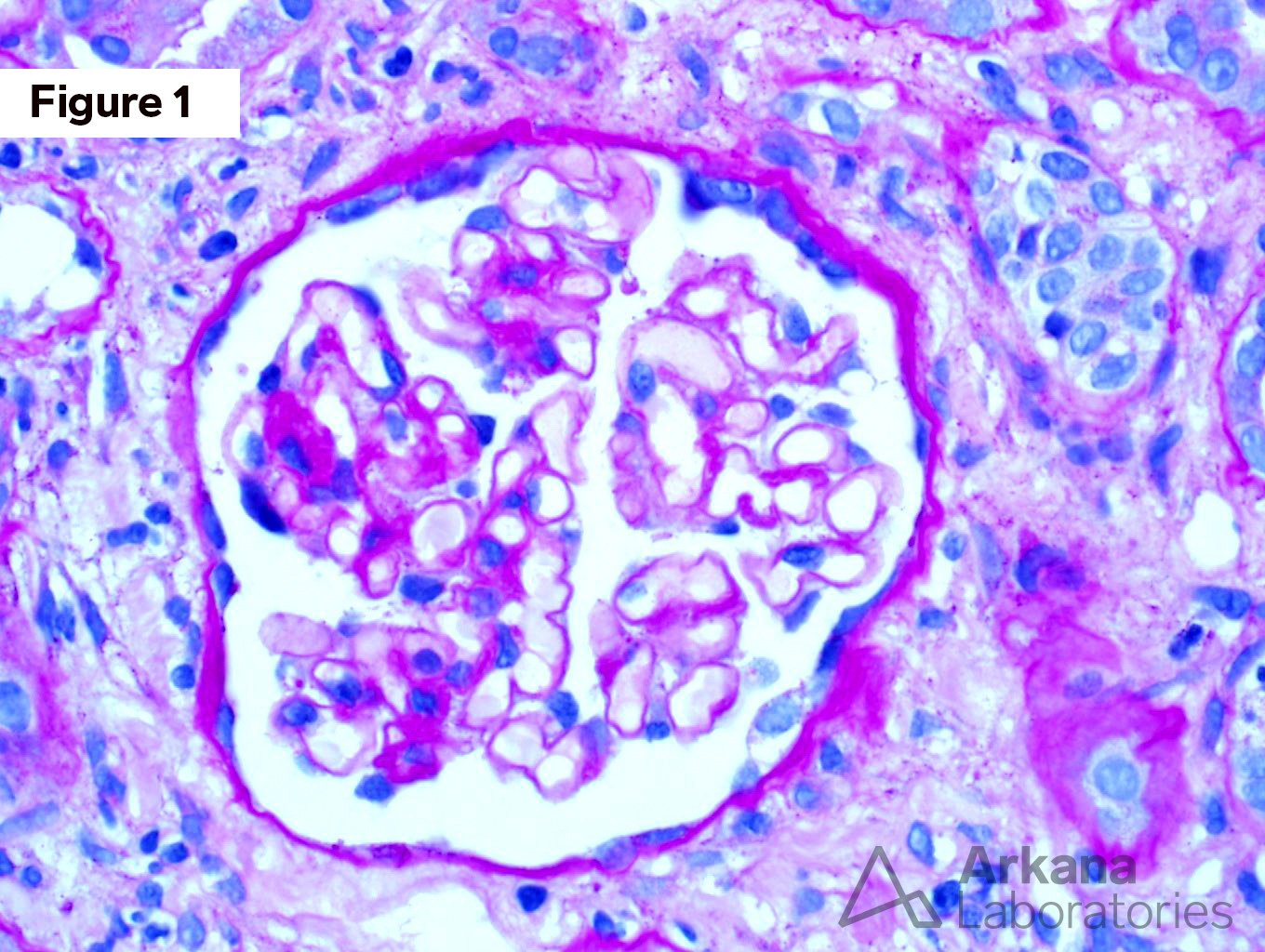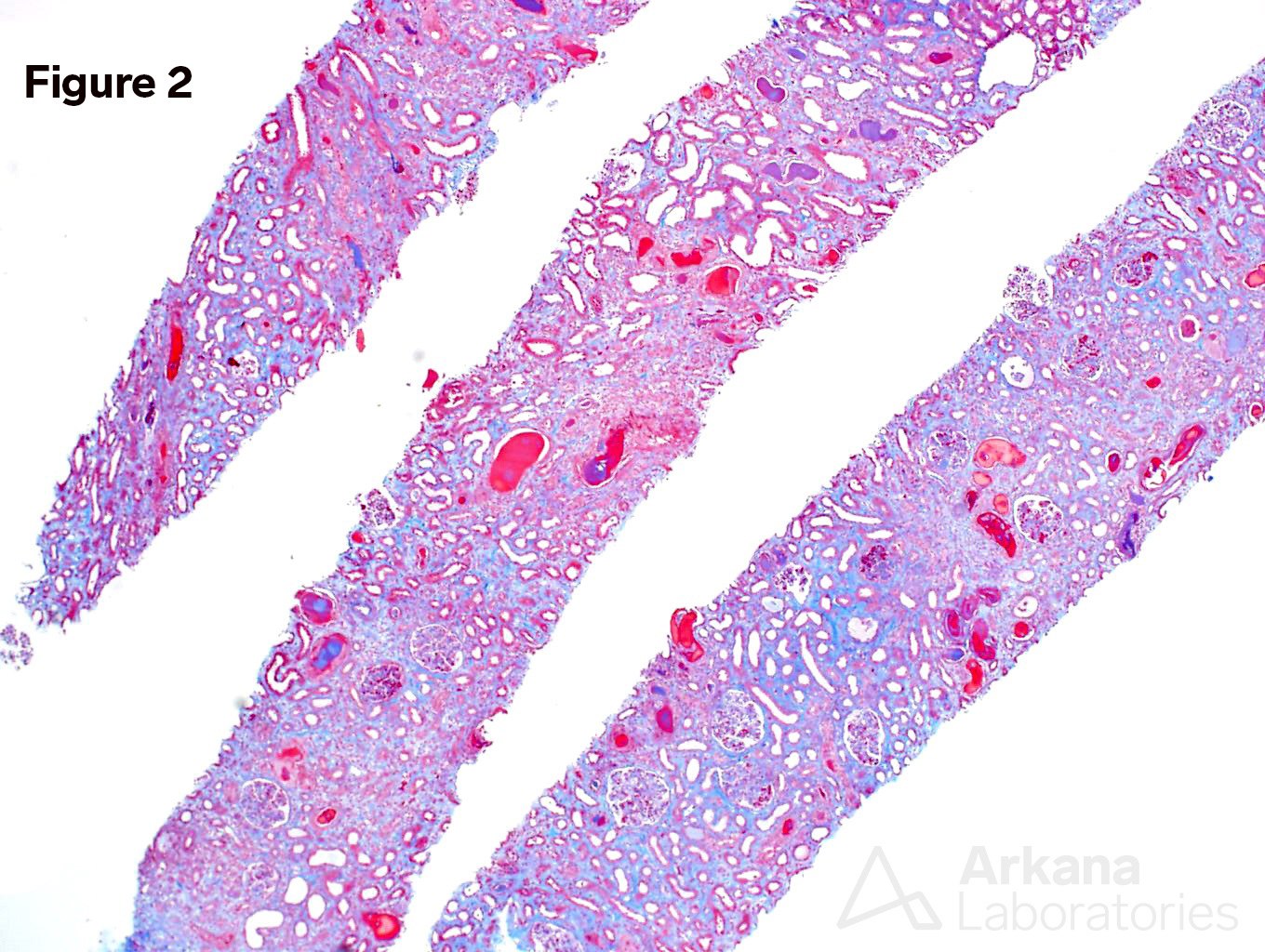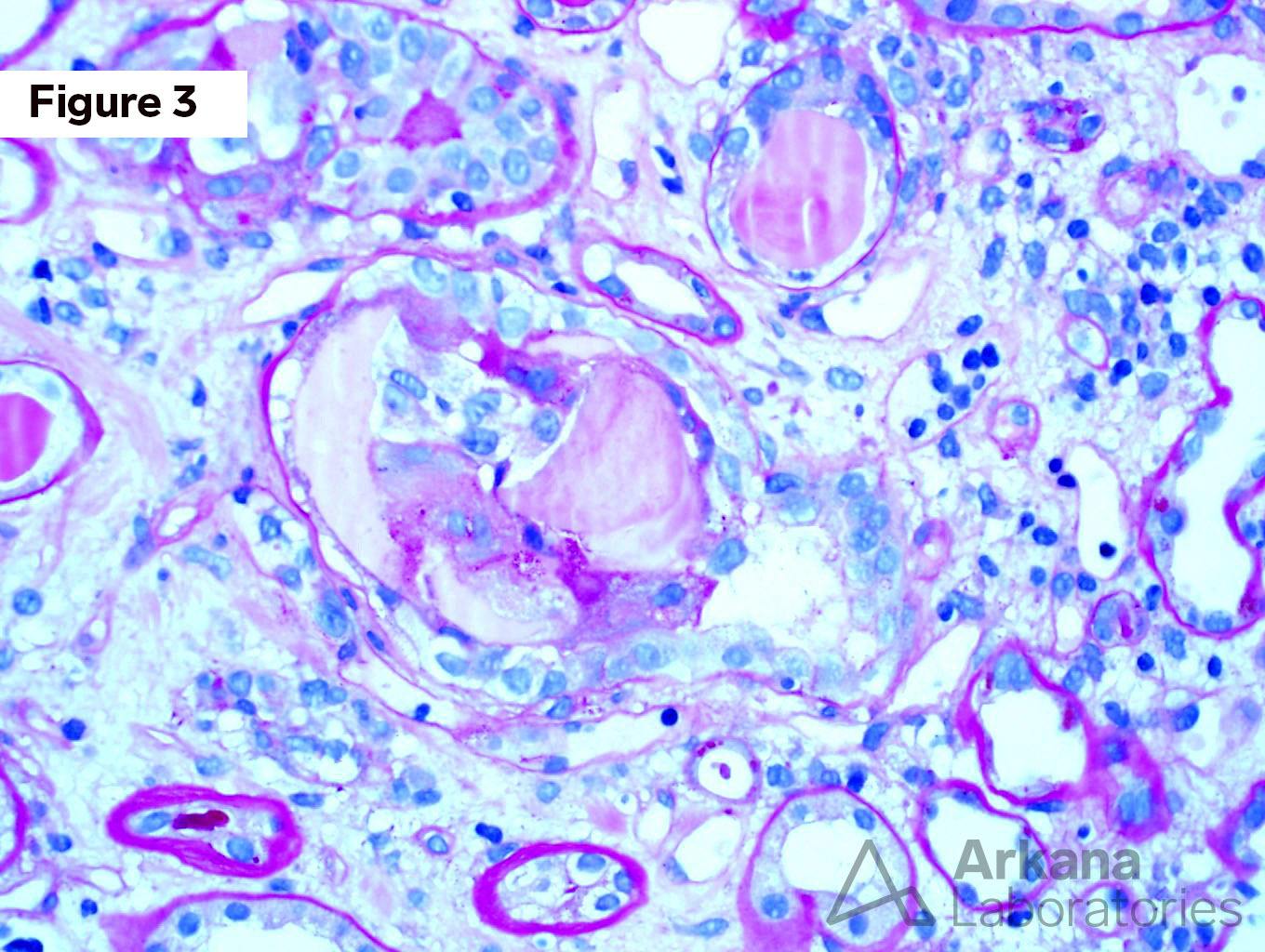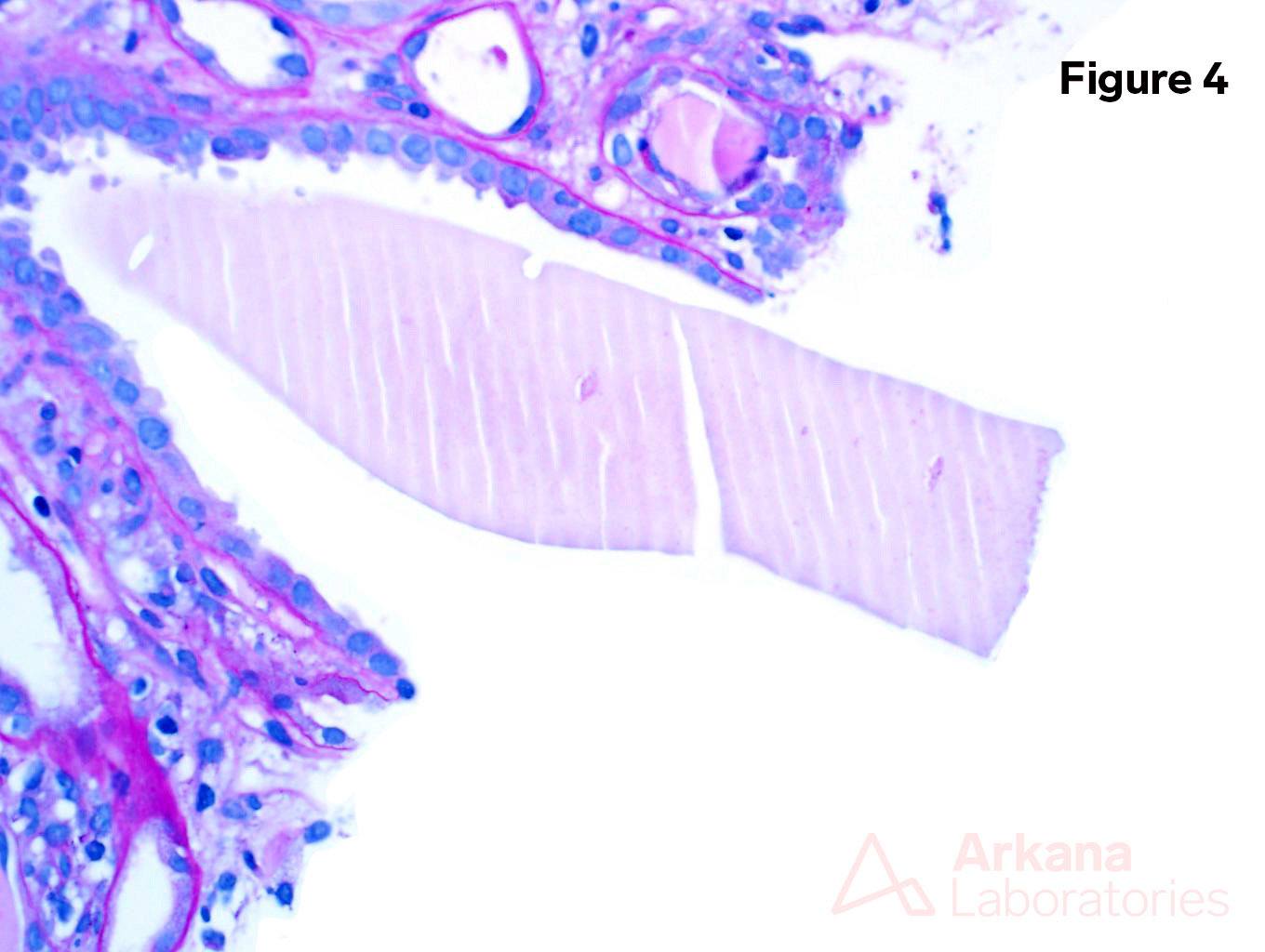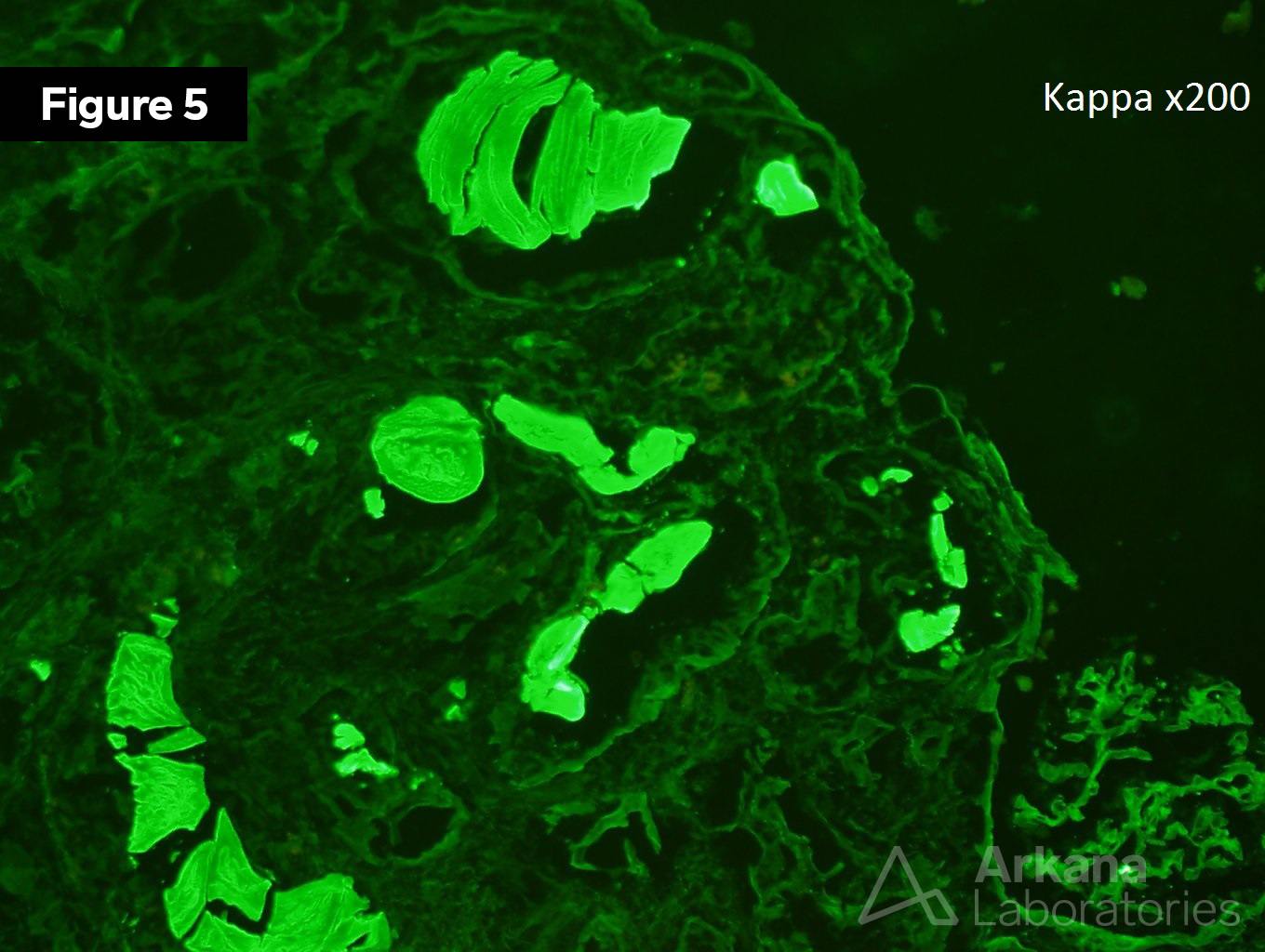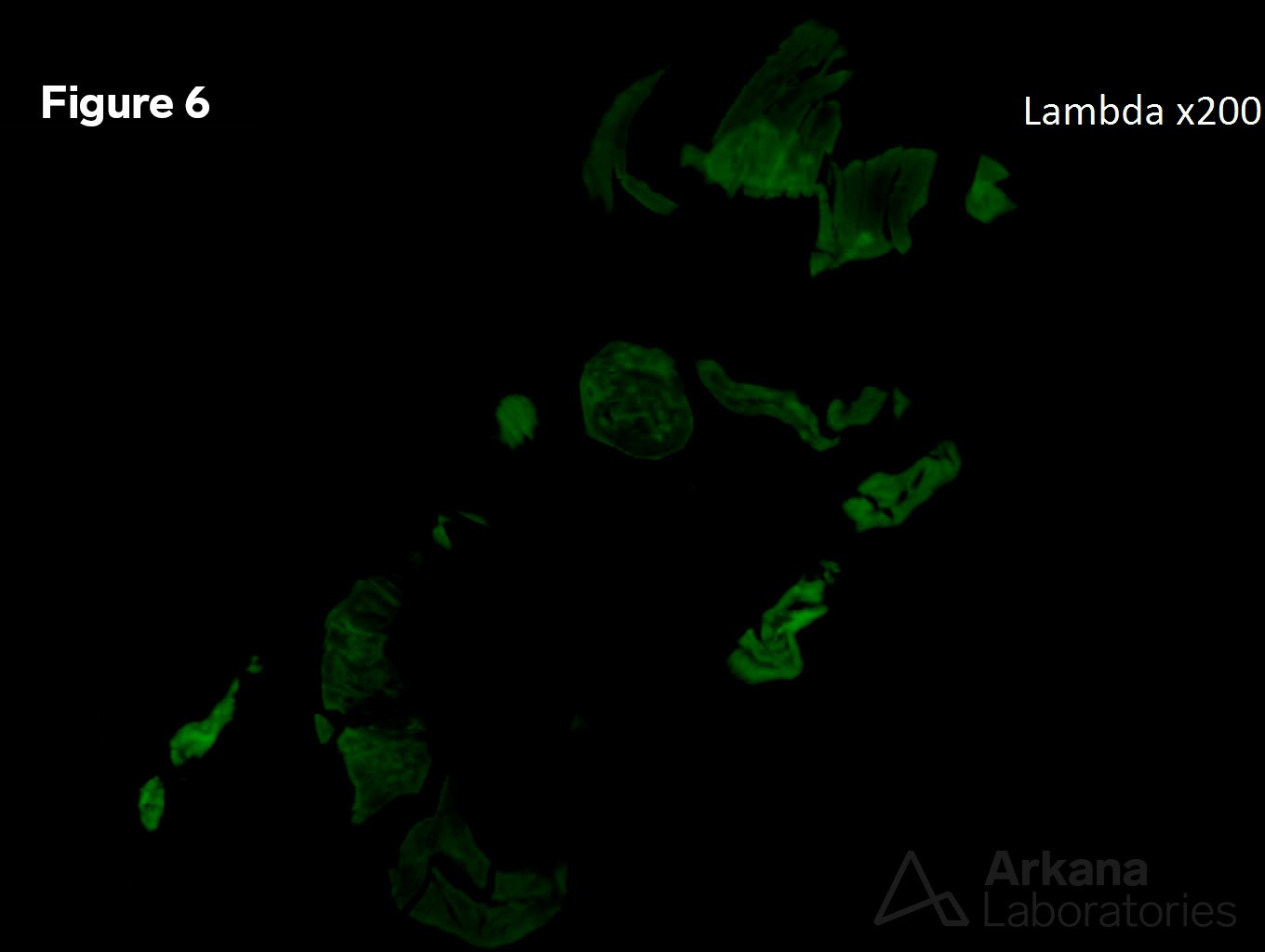A 75-year-old female is found to have a creatinine of 4.0 mg/dL on a routine laboratory examination. At the hospital, a CT scan shows lytic lesions within the skull. A SPEP shows an IgG kappa monoclonal protein. A bone marrow biopsy shows 5% plasma cells. A kidney biopsy is requested to look for monoclonal gammopathy of renal significance. Figure 1 shows a normal glomerulus. Figure 2 shows severe interstitial fibrosis. Figures 3 & 4 show abnormal, PAS negative “stiffened” casts with cellular reaction and fracture. Figures 5 & 6 show kappa and lambda immunofluorescence, respectively.
This is a case of kappa light chain cast nephropathy. Light chain cast nephropathy is characterized by tubular injury and the presence of PAS-negative casts within the distal tubules. Light chain cast nephropathy is the most common renal lesion associated with multiple myeloma and more than 90% of patients with cast nephropathy have multiple myeloma. Light chain cast nephropathy is not considered a monoclonal gammopathy of renal significance since the presence of cast nephropathy is considered a myeloma-defining event. This patient is now diagnosed with multiple myeloma even though the plasma cell amount on the bone marrow biopsy is only 5%.
https://www.ncbi.nlm.nih.gov/pubmed/26735145
Quick note: This post is to be used for informational purposes only and does not constitute medical or health advice. Each person should consult their own doctor with respect to matters referenced. Arkana Laboratories assumes no liability for actions taken in reliance upon the information contained herein.
